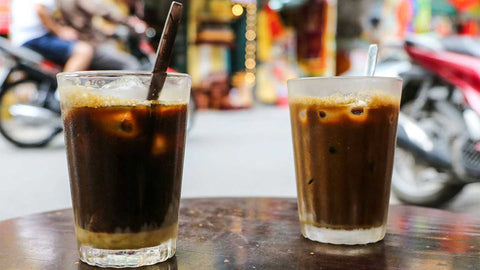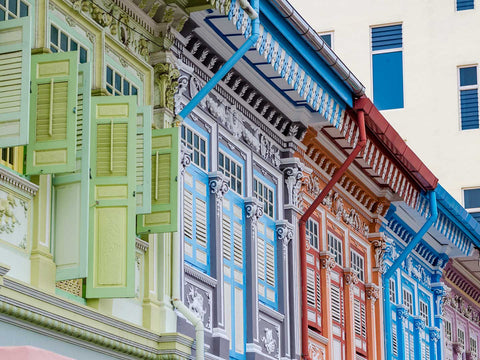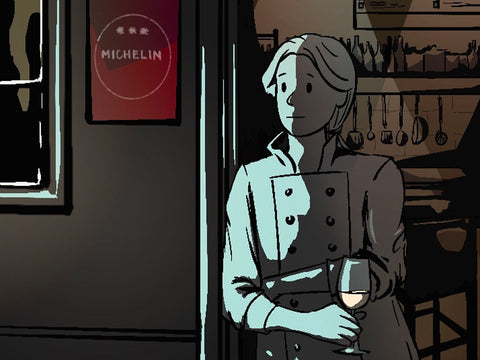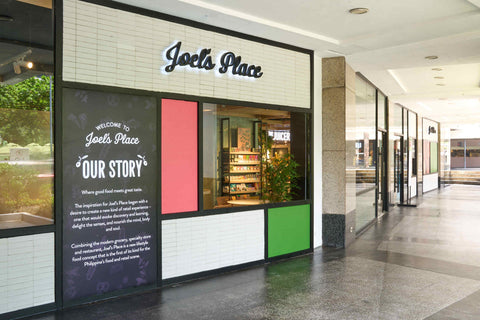As you walk along the streets of Hanoi, one thing becomes clear: this city likes to eat. Freshly made, piping hot pho is served as early as 6 am, banh mi stalls dot the streets, and the table turnover at bun cha spots during lunchtime feels like a well-rehearsed play between customer and vendor—it’s a mesmerizing sight. The smell of lemongrass, coriander, and nuoc cham is never far off; those, and coffee.
Oh, the coffee.
In the heart of Vietnam’s Central Highlands, amid the region’s lush greenery and fertile soils, is where some of the best robusta beans in the world are grown. Down in the city, Vietnam’s vibrant café scene beckons with its chic modern establishments and charming street-side vendors.
Scattered along the streets of Hanoi’s old quarter are small plastic stools in front of nondescript coffee joints, inviting you to sit down and have a cup. These roadside stools are culturally ubiquitous and symbolic enough that you can find them adorning magnets, t-shirts, art prints, and other souvenirs from the country. Coffee in hand—choose from the classic Vietnamese, egg, or coconut—you can watch the world go by.
These bustling cafés are more than just places to experience a quintessential cup of Vietnamese coffee; they are social hubs where friendships are nurtured, deals are sealed, and creativity flourishes over the aroma of freshly brewed beans.

These bustling cafés are more than just places to experience a quintessential cup of Vietnamese coffee; they are social hubs where friendships are nurtured, deals are sealed, and creativity flourishes over the aroma of freshly brewed beans.
The roots of Vietnam’s coffee culture stretch back to the mid-19th century, when French colonialism left its indelible mark on the nation. It was during this time that French settlers first introduced coffee cultivation to the central provinces of Dak Lak, Lam Dong, and Gia Lai. To this day, these regions remain the heart of Vietnamese coffee production. The Northern provinces of Son La and Lao Cai also play a vital role in Vietnam’s diverse coffee landscape: here, robusta reigns supreme, flourishing in the region’s tropical climate and volcanic soil. These jewels among Vietnam’s most prized exports, known for their bold flavor and high caffeine content, are sought after all over the globe.
For many, no trip to Vietnam is complete without a visit to one of its iconic French-style cafes. Adorned with elements of colonial architecture, these street cafes captivate locals and tourists alike with their dynamic charm. While it is true that methods like the French press and espresso were introduced by the French, local flair has truly made the area’s coffee culture shine. This fusion of cultures birthed unique brewing techniques and flavors that are distinctly Vietnamese. For instance, traditional phin filters have become a staple in Vietnamese households, offering a simple yet effective way to brew coffee. Then there is ca phe sua da, where the addition of condensed milk lends a creamy sweetness that is unique to the country. Not least, coconut coffee is a decidedly tropical twist.
In a small street in Hoan Kiem, tucked into the second floor of what looks like a small abandoned colonial house is one such French-style café: Loading T. The French influence is undeniable in its interiors, playlist, and excellent croissants—one can spend a lazy afternoon reading, people watching, or pretending to be Amelie sitting in one of its plush armchairs. It’s a popular stop on small, independent coffee tours, and you can hear local guides urging tourists to give the egg coffee a try, explaining its roots in the country’s geography, colonial past, and present local traditions. Indeed, coffee is more than coffee in Vietnam.
Coffee culture remains a beacon of the nation’s pride and inspiration, a testament to its enduring spirit of tradition and innovation. Within its rich cultural heritage, Vietnamese coffee stands as a vibrant thread weaving together the past, present, and future in a jubilant celebration of flavor, community, and shared experiences.





